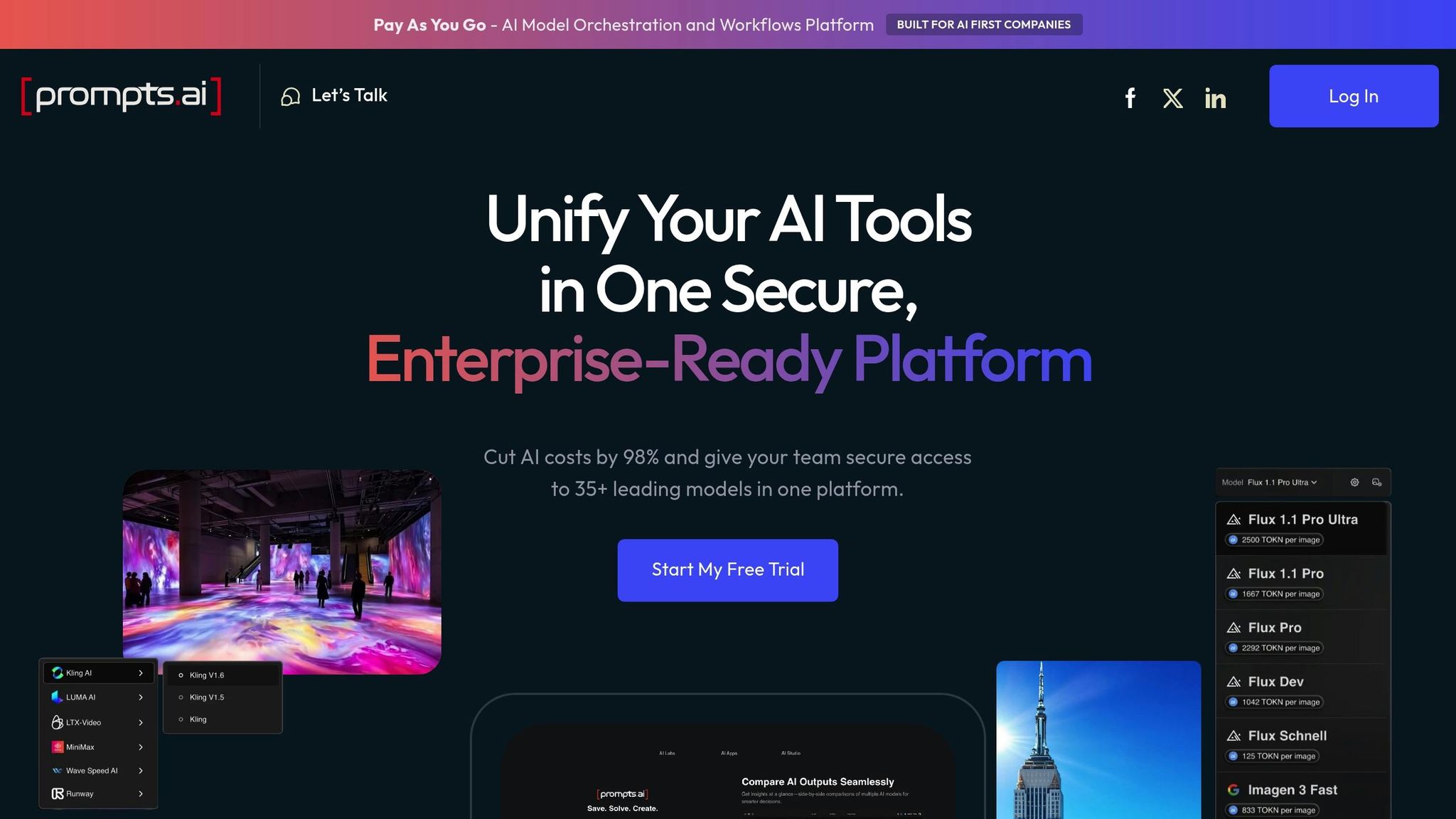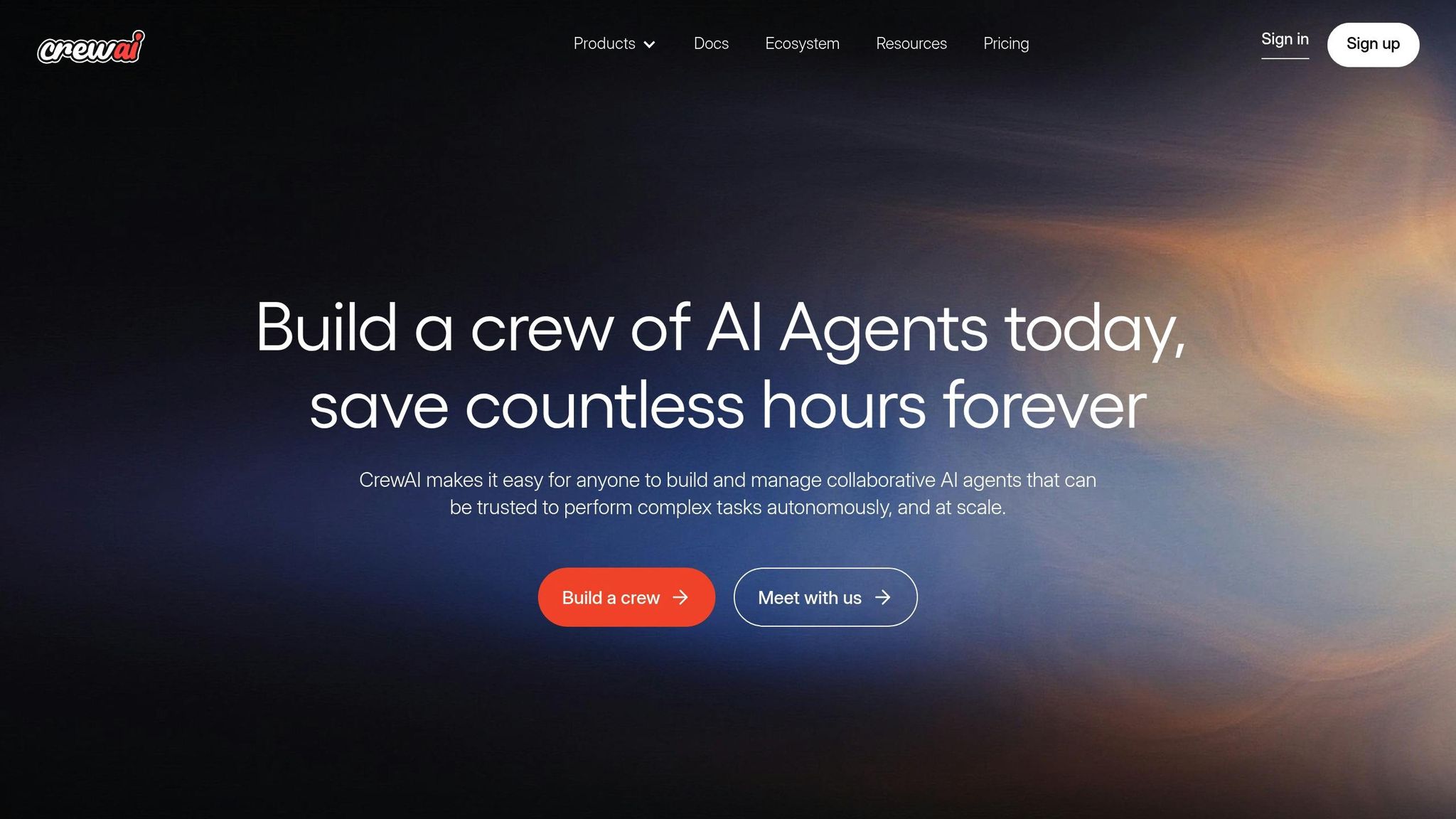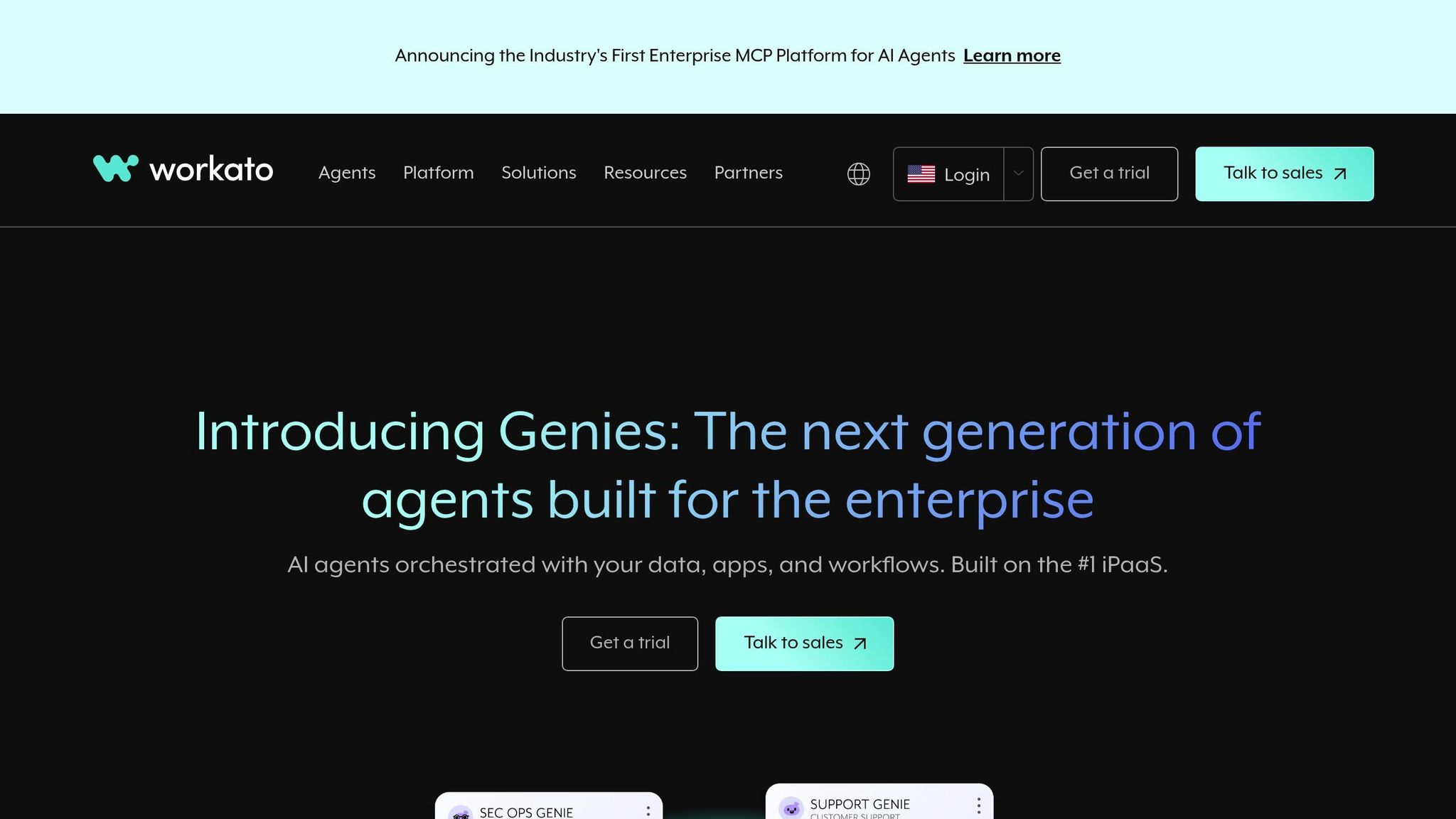
AI hubs make it easy to handle big tasks by putting tools, huge AI models, and auto-work all in one spot. They say global AI cash will hit $227 billion by 2025. Now, these centers are key - not just extra - for keeping costs low, staying in check, and growing.
Here's a fast look at three big players:
| Platform | Key Features | Pricing Info | Best For |
|---|---|---|---|
| Prompts.ai | Over 35 LLMs, checks tokens, can grow big | From $29 each month | Small to mid-sized firms |
| CrewAI | AI helps teams, works in cloud or on place | Not told | Groups who want tasks done by AI |
| Workato | Works with 1,000+ apps, uses recipe flows | Prices change by connector | Big firms |
Prompts.ai is cheap and easy. It's great for firms growing their AI work. CrewAI works well when people need to work together, while Workato is good for big firms that need lots of system mixing.

Prompts.ai is a strong tool made for big groups. It brings over 35 top big language models - like GPT-5, Claude, LLaMA, and Gemini - together in one safe place. By putting all these tools in one spot, it removes the need to handle many systems, filling the need for a single AI center.
With its smart setup for work flow, users can look at model work side by side, making it easy to pick the best one for each job - all from one clear screen. This way of doing things not only makes work easy but also helps control costs and follows set rules.
One big thing about Prompts.ai is its FinOps part, which keeps a close watch on token use across all models. By connecting token use to work wins, it lets groups cut AI software costs by up to 98% versus having many pay plans. The pay-as-you-go TOKN credit system makes sure users only pay for what they need, giving great cost saving.
Prompts.ai also looks at safety and following rules. With strong safety steps and clear check paths, firms can surely meet set standards and keep control of their AI use.
Making things bigger is easy with Prompts.ai’s able setup. You can add new models, users, or teams in just minutes, all without breaking current work flows. More tools, like the Prompt Engineer Certification program and made-to-fit "Time Savers", boost work speed by making prompt handling better.
Prices start at $29 each month for one person, with team plans from $99 to $129 per team member each month. This range makes sure the tool can grow and is easy to get, making Prompts.ai a must-have for managing modern AI work flows.

CrewAI makes AI team work come to life, helping groups set up AI helpers that tackle big tasks with care and in step with each other.
At the heart of CrewAI lies its agent-style setup, which lets people build "crews" of AI helpers, each with jobs like looking up info, writing, or making sense of data. This clear layout makes sure the AI agents work well together, just like a tight-knit team. By giving out clear jobs, CrewAI makes work flow better and helps AI agents get along well.
The tool fits well with many business tools and data sources, making it useful in lots of work settings. Thinking of growth, CrewAI has options for both cloud and on-site use. This choice helps firms with changing needs, mainly those handling big, complex AI tasks with steps and roles laid out clearly.
Next, we'll look at another tool built to lift AI work flow automation.

Workato acts like a simple AI hub made to link business apps and systems without fuss, making workflows that cover a full tech range. It aims at automation that doesn't need a lot of tech know-how, so many teams from different areas can use it.
A key part of Workato is its recipe-based system for making AI workflows. These recipes are ready-made guides that help automate tasks like handling bills, managing customer info, and sorting support tickets. With AI, these workflows can make smart choices - like picking the right department for a customer issue or spotting strange trends in money moves.
Workato works with over 1,000 business apps, including big names like Salesforce and Microsoft 365, as well as smaller, special tools for certain jobs. This wide link-up lets businesses make workflows that pull info from different places, use AI to work on it, and then send useful results back to the right systems. For example, a business could set up a workflow that gathers client feedback from various spots, lets AI check the mood, and then updates client records while telling the right team.
Security is big for Workato, making it a safe pick for big groups. Its enterprise-grade security includes data encryption, roles to control access, and compliance tools that meet tough standards. These steps make sure that businesses can handle sensitive tasks through AI-powered automation with trust.
Workato uses a connector-based pricing model, where costs depend on how many apps are linked and how many tasks are done each month. Costs may go up with more use, but this method is clear and lets businesses grow their work slowly while keeping an eye on costs.
For businesses that already use a lot of software, Workato gives a smart way to make better workflows with AI - no need to start over. The platform manages the tech bits, letting business teams focus on making workflows that really deal with their problems well.
Next, we’ll look at how each platform stands out.
When looking at AI control rooms, it's key to think about their good and bad sides. Prompts.ai is known for its many clear features and plus points in how it works.
| Platform | Key Strengths | Main Limitations |
|---|---|---|
| Prompts.ai | • Clear pay-as-you-go plan, cuts AI software price by up to 98% • Big-scale work power for hard jobs • Opens doors to more than 35 top big word models in a safe, one spot • Has built-in checks and trails |
– |
| CrewAI | • Work setup with AI help, lets teams work together | • No clear public info on price and size limits |
| Workato | • Works with over 1,000 work apps • Uses recipe style for automation |
• No clear public info on price and size limits |
For CrewAI and Workato, it's hard to find how they score on things like costs, size-up, and tech needs. Here’s a look at how these places shape up in key work areas like costs, size-up, joining things, and tech needs.
Keeping costs down and being able to get bigger are key for any AI spot. Prompts.ai has a clear pay-when-you-use price plan, cutting AI costs by up to 98%. This setup is great for groups whose AI needs change often. Also, its big-scale growth lets you add models, users, and teams fast, letting firms grow as they need. On the other hand, CrewAI and Workato don't share clear facts on these points, making head-to-head looks hard.
Prompts.ai makes joining things easy by putting over 35 top big talk models into one safe spot. This cuts out the need to handle many AI setups, making work smoother while keeping things very safe. This all-in-one way not only saves time but also makes handling lots of AI tools simpler.
Prompts.ai fits many users, from new ones to old pros. Its easy-to-use setup is helped by top tools, like the Prompt Engineer Cert and changeable "Time Savers", which lift work levels for all skill sets. This mix makes sure that both tech and non-tech teams can use the platform well.
Picking the right AI hub hinges on your firm's size, cash limit, and tech aims.
After looking into each option, Prompts.ai stands out as a top pick for small to mid-sized firms. Its pay-only-when-you-use plan cuts AI costs by up to 98%, while giving access to over 35 top large language models via a safe, single spot. With aids like the Prompt Engineer Ticket and built-in quick-use tools, it makes using AI easy for any team. Its flexible and growing set-up fits firms with changing AI needs.
CrewAI leans on crew-based AI steps, but its cost facts aren't clear. If you need to plan your cash out, you might have to dig into this more before going all in.
Workato, is built for big firms that need a lot of linking with other tech. It has high-end options and wide link ways for those with big funds and their own tech teams. But, for many small and mid-sized firms, its skills might be more than needed.
Workato's way of doing things is built on a recipe system that makes things simple with ready-to-use connectors and an easy visual set-up. With this, people can make work flows that bring together more than 1,000 apps, and they don't need to know a lot about coding.
These "recipes" are set up to do stuff like moving data and working through many steps, using tools like if-this-then-that rules, repeats, and ways to fix errors. This makes it easy to start and look after complex links, saving time and making work run better.


